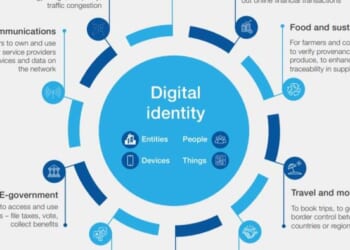You just landed after a quick business trip. You have been on the red eye into Atlanta, tired but eager for a hot shower and your own bed. The Uber hums along I-285, headlights slicing through the night, when suddenly everything changes.
The dashboard lights flicker and die. The engine coughs and goes silent. The Uber rolls to a stop, and you realize every other vehicle around you has gone dark too. Traffic lights are out. The city that never sleeps is hushed in an unsettling way. You notice the rustle of leaves, the soft whistle of the wind between the buildings, and the distant, confused chatter of thousands of people.
This is the calm before the storm. EMP survival just became your reality.
You know what happened, an electromagnetic pulse just hit. Within the hour, confusion will turn to chaos. No phones. No power. No cars. Just millions of people trapped in a city that has suddenly gone silent. The question is: what do you do next?
Why EMP Attacks Are the Ultimate Urban Nightmare
An electromagnetic pulse event, whether from a solar flare, nuclear detonation, or hostile attack, could instantly cripple our electronic infrastructure. No cell phones. No GPS. No credit cards. No fuel pumps. No traffic lights. In a city like Atlanta with over six million people, you are looking at complete chaos within hours.
Most people living in major metropolitan areas have no clue how dependent they are on the grid. When that infrastructure disappears, you may not have long before panic sets in. After that you are dealing with desperate people making desperate decisions.
The reality is harsh. In a true grid down survival scenario, staying in the city is not an option. You need to get out, and you need to do it fast. The skills you apply in those first critical minutes after the grid goes down will determine whether you make it home or become another casualty of urban collapse.
The Critical First Hour: Assessment and Decision Making
Envision yourself standing on a dead interstate surrounded by thousands of confused people. Some are frantically pressing buttons on their dead phones. Others are popping hoods on cars that will never start. The iconic Coca Cola sign downtown flickers once and goes dark. The skyline is black except for the fading glow of hazard lights.
This is your golden window. While everyone else is frozen like deer in headlights, you need to be moving.
Situational Assessment
• Try and confirm the scope. Is it local or widespread?
• Read people’s body language to identify threats
• Locate your position and plan your route home
Resource Inventory
• What is in your get home bag
• How much cash do you have in small bills
• How far are you from home and how much daylight remains
• What is your physical condition
The longer you wait, the worse the environment becomes. Those first 30 minutes are everything.
Prepared vs Unprepared: Which Role Are You Playing
When the grid goes down in a city like Atlanta, you are either prepared or unprepared. The gap between those roles can mean the difference between making it home or being stranded.
The Prepared
You have your get home bag within reach or at least solid everyday carry items. These may be limited if you did not check a bag and just had a single carry on for the flight home. That is ok. You have the essentials. You know your routes, your gear is tested, and your body is conditioned for the miles ahead. You can move decisively because you have already practiced what to do when the lights go out.
This is why I always tell people to keep a get home bag in their vehicle and never travel without at least some form of EDC kit. Personally, I never travel without my Wazoo EDC Cache Belt. It looks like a normal belt, but inside I stash small survival items like water purification tablets, a ferro rod, cash, a tiny compass and even a mini blade.
The Unprepared
You are traveling light. Maybe you just have your phone, wallet, and a laptop bag. No food. No map. No tools. In this role you are already behind, but it does not mean you are helpless. Accept reality fast while everyone else is still frozen in shock. Then scavenge smart. Paper maps, containers for water, makeshift clothing layers, and sturdier shoes can likely all be found if you keep your eyes open. Navigation can be improvised with the sun, stars, or terrain association. Water can be pulled from heaters, tanks, vending machines, fountains or ponds if you know how to treat it. Even without gear, moving with purpose puts you ahead of the masses.
Becoming More Prepared En Route
Even if you start unprepared you can still level up as you move. Every stop is an opportunity to grab something useful and add it to your survival kit. A cheap lighter at the gas station suddenly feels like the best two bucks you ever spent. That lukewarm bottle of water from a vending machine tastes like liquid gold. A bargain-bin box cutter from the hardware store might not be pretty, but in your hands it is now priceless. You will feel like Rambo with a five dollar blade.
One man’s trash can become another man’s treasure. I am sure you can scavenge material along the way if you stay alert. A piece of plastic for a tarp, a discarded jacket, or even a broken umbrella might keep you dry through the night.
A lot of you watch my YouTube videos for entertainment, laughing when I sleep under tarps in the rain or cook squirrel over a Dakota fire hole. When the grid goes down those lessons need to click in like muscle memory. Knowledge is gear. The tips you picked up might be the difference between freezing in panic or moving with confidence. You cannot build a perfect get home bag on the spot, but you can scavenge, improvise, and cobble together enough to tilt the odds back in your favor. Just be prepared and don’t fall into this category please.
Essential Get Home Bag Gear for Grid Down Scenarios
The silence of a dead city feels heavier with each step. You catch the glow of headlights abandoned mid-lane, doors left hanging open, horns locked in a final frozen cry. It’s in this kind of darkness that fear multiplies. But your bag is more than fabric on your shoulders, it’s a contract you wrote with yourself long before tonight. Every zipper you pull is a promise that you’ll make it home.[/caption]
Your Insurance Policy in the Dark
When panic closes in, your Get Home Bag is more than sharp steel. It’s an insurance policy against the unknown.
Your get home bag is your lifeline. Here is what belongs in it:
Navigation and Communication
• Compass and backup compass
• Paper maps of your area
• Radio for emergency broadcasts (protected in a emp proof bag)
• Whistle and signal mirror
Water and Food
• Portable water filter and tablets
• Metal single wall container for boiling
• High calorie lightweight food for 72 hours
• Collapsible water containers
Shelter and Fire
• Lightweight tarp or emergency bivvy
• Fifty feet of paracord
• Fire kit with multiple ignition methods
• Rain gear or poncho
• Emergency blanket
Security and Tools
• Fixed blade knife, folder and or multitool
• Discreet defensive tools like a tactical pen
• First aid kit
• Cash in small bills
• firearm if possible










